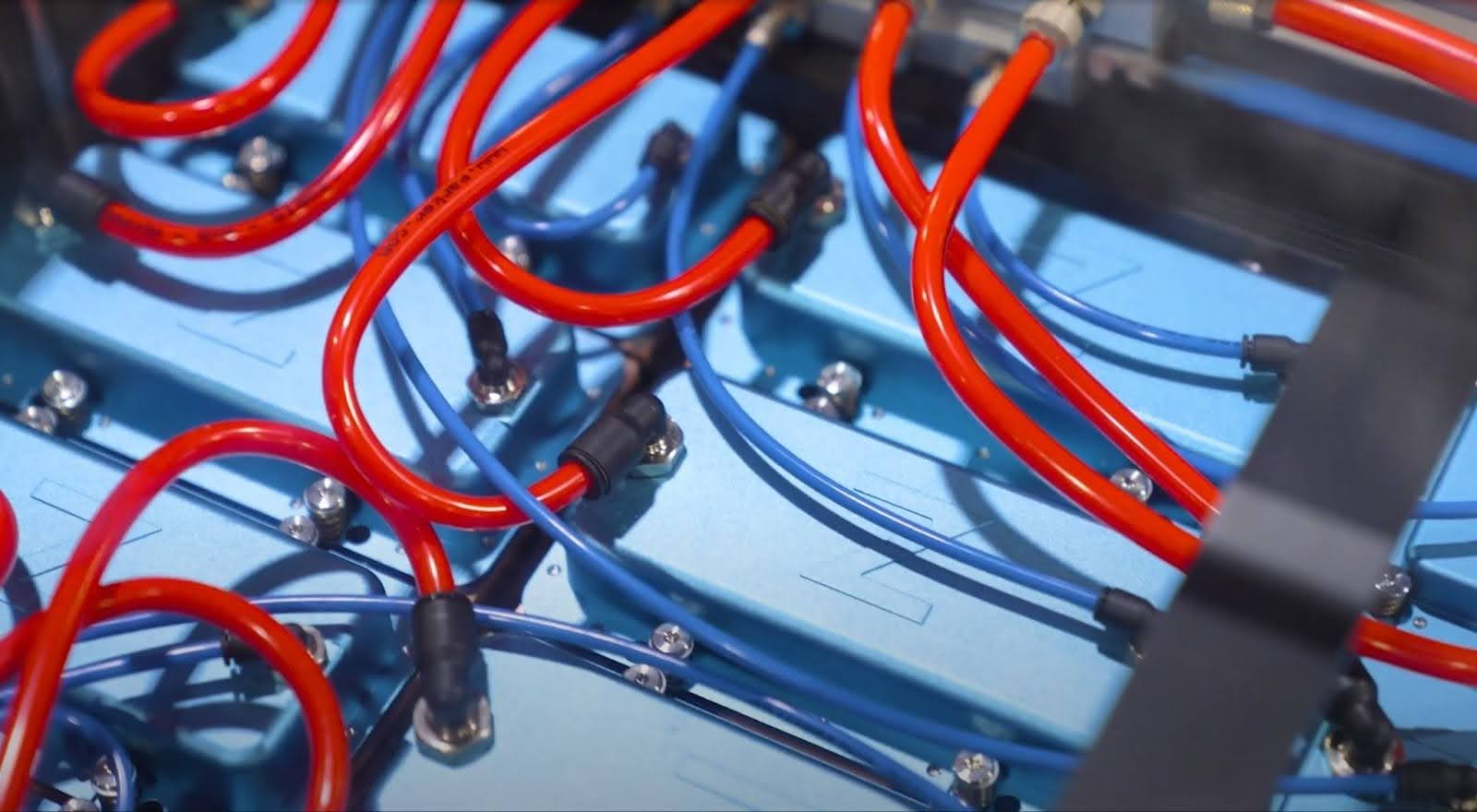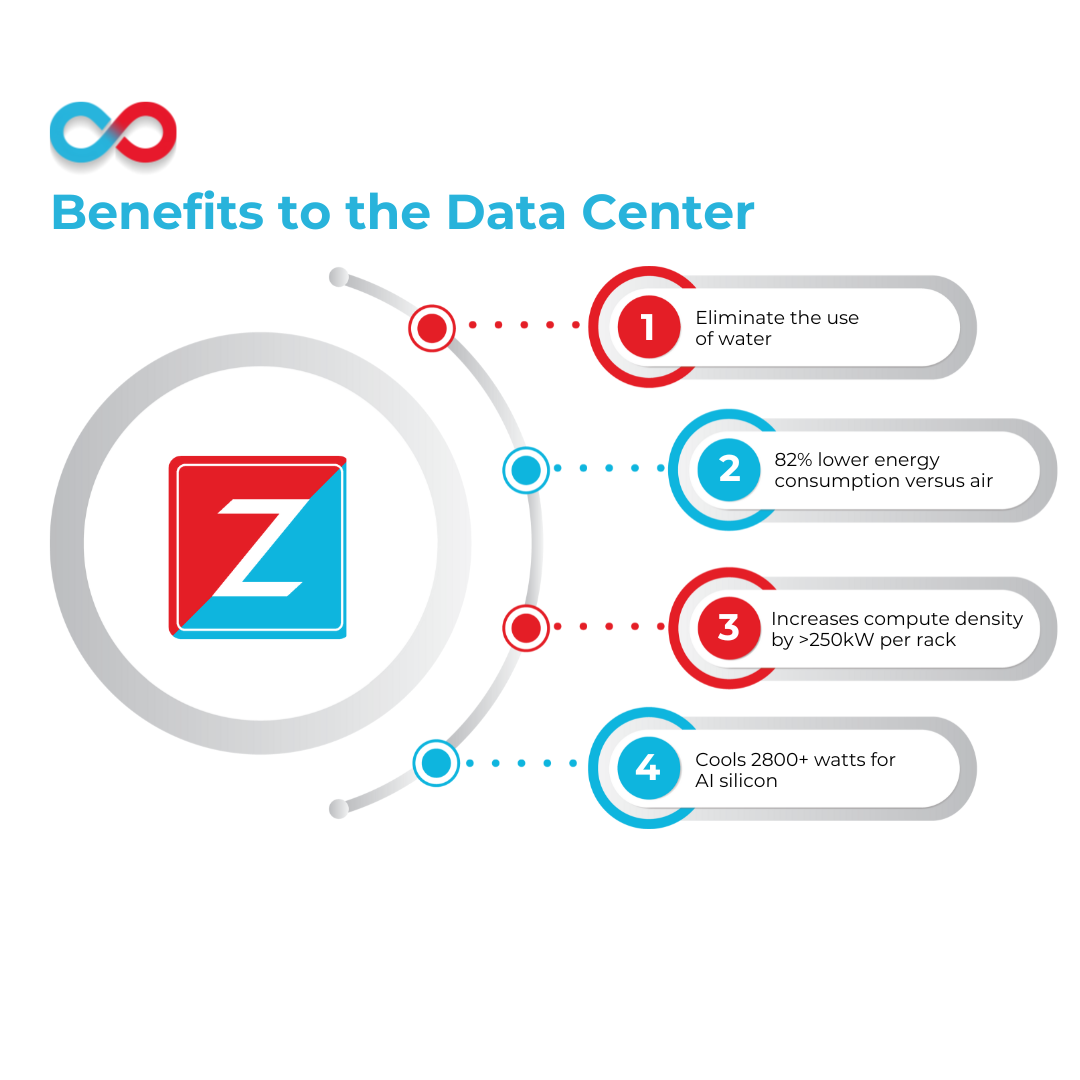2 min read
StorageReview Sees "Dramatic" Results using Two-Phase Direct-to-Chip Liquid Cooling
Calling all GPUs and CPUs!! The first independent review of waterless two-phase, direct-to-chip liquid cooling is out, and according to...
3 min read
 Alison Deane
:
May 15, 2025 12:35:49 PM
Alison Deane
:
May 15, 2025 12:35:49 PM

As high-performance computing (HPC), artificial intelligence (AI), and machine learning (ML) workloads continue to drive up power densities in modern data centers, conventional air-cooling solutions are being pushed to their limits. To address these escalating demands, the University of Chicago independently validated the performance of an integrated waterless liquid cooling solution. Their findings deliver compelling evidence for the future of high-density, sustainable computing.
Through comprehensive side-by-side testing, the University compared ZutaCore® HyperCool® waterless liquid cooling technology integrated into Chatsworth Products’ (CPI) ZetaFrame® Cabinet System against traditional rear door heat exchanger (RDHx) solutions.
The results reveal significant thermal and energy efficiency benefits, reduced internal cabinet temperatures, and consistent performance under demanding workloads.
The University of Chicago’s research computing teams required a data center cooling solution that could meet the rapidly evolving, GPU-intensive workloads. With multiple research groups, including Maniac Lab, Toyota Technological Institute at Chicago (TTIC), and the Research Computing Center (RCC), relaying on dense compute clusters, effective thermal management was essential for growth.
Historically, the University’s utilized RDHx cooling, which operates by routing hot exhaust air to a rear-mounted coil for heat dissipation. While effective at lower densities, RDHx systems struggled to maintain safe internal temperatures as server power demands increased. The University sought a solution capable of directly and efficiently removing heat from within the cabinet, addressing the challenges of high-density environments head-on.
The University of Chicago independently deployed an integrated two-phase waterless liquid cooling solution featuring patented pool-boiling technology. This system dynamically adapts to varying heat generation, regardless of flow volume, ensuring optimal thermal management. By utilizing cold plates placed directly on top of the processors, the University maintains consistent temperatures, effectively mitigating thermal shocks and enhancing silicon longevity, even during rapid power fluctuations common in AI workloads. This advanced cooling solution includes
The proof of concept directly compared identical server hardware—with and without waterless liquid cooling—running the same workloads simultaneously. The test systems included Dell PowerEdge R6525 models equipped with AMD EPYC 7302 processors.
For seven days, the team rigorously tracked key performance indicators such as CPU temperatures, power consumption, noise levels, and compute performance.
The University’s testing r several significant advantages of the waterless liquid cooling system compared to RDHx:
These results validate waterless liquid cooling as a solution that supports high-performance environments while delivering energy savings and superior thermal management.
The success of the proof-of-concept generated excitement across the University of Chicago’s research teams. They not only recognized the operational benefits but also began planning for broader deployment of waterless, direct-to-chip liquid cooling across additional compute clusters.
Lessons learned from the deployment highlighted the importance of preparing for specific maintenance requirements, such as carefully managing temporary service interruptions and selecting robust, user friendly connection hardware.
Moving forward, the University intends to expand ZutaCore’s waterless liquid cooling cooling, fine-tune system configurations for job optimization, and explore further energy efficiency advancements.
Through independent testing, the University of Chicago has demonstrated that an integrated waterless direct-to-chip liquid cooling solution from ZutaCore with CPI’s ZetaFrame Cabinet System offers a scalable, high-performance pathway for modern data centers.
By cutting internal cabinet temperatures by over 50°F, reducing energy consumption by 37%, and maintaing consistent performance even under extreme workloads, the University’s has set a model for data centers striving to align with next-generation requirements. This study underscores that the future of energy-efficient, sustainable, high-performance computing is already within reach.
To learn more about how HyperCool can transform your data center download our eBook.

2 min read
Calling all GPUs and CPUs!! The first independent review of waterless two-phase, direct-to-chip liquid cooling is out, and according to...

3 min read
Newly constructed data centers and AI factories must be carefully designed to respect dramatic increases in thermal output from today’s superchips....

3 min read
The rising demand for high-performance computing (HPC), AI, IoT, and 5G technologies has become a major challenge as chips grow ever-hotter and data...